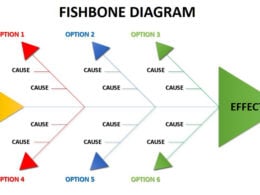Employee Energy is Key to Small Business Success
An Interview with Theresa Welbourne, Ph.D. of eePulse, Inc.
Theresa Welbourne, Ph.D. decided to take her research on employee energy and firm performance and turn it into a technology business to help organizations improve productivity. In the process, her company, eePulse, Inc, www.eepulse.com, grew and became successful on a worldwide basis.

I recently talked to Dr. Welbourne to get her tips on creating and developing a successful business from scratch. Here’s what she had to say.
Tell us why you started eePulse and how you turned your research on employee energy into a successful business.
The business grew out of my research, conducted while on the faculty at Cornell University. The goal was to commercialize work I was doing that demonstrated the determinants of fast growth and high performance in several large samples of initial public offerings (IPOs).
We started out studying thousands of firms, tracking them from pre-IPO to 1, 3, 5, and 10 years out. With significant incidents of organizational death, we could separate out the factors that differentiated the alive vs. dead as well as getting in-depth information on firms that not only survived but thrived (stock price grew, revenues expanded, firms increased market share, etc.).
We had several, very interesting insights that then led to creation of interventions that mirrored what the successful firms were doing. The biggest insight was around creating a high sense of urgency culture that allowed for employees to be at their best, innovate and help their companies grow.
Over the years, we developed technology to help support our work, and we scaled up a consulting model to go along with the technology. Since our inception in 1996, we have helped clients around the world grow and innovate – creating sustained growth environments where employee and bottom-line profitability all grow together.
What is the biggest challenge you faced when starting your business and how did you overcome it?
I should not have been surprised to learn that growth was difficult, and that was our biggest challenge. How do you grow a business when you are small compared to your competition? How do you convince large firms to go with you vs. a big company that has been “out there” for many years?
Getting our sales pitch down and being able to clearly understand how our offering was different and better was, and continues to be, challenging. I guess that’s the hardest part -the continuing part. You’re never “done;” the competition continues to change; we continue to add new products and services, and our clients teach us what we need to be doing next.
Business is all about moving forward and learning how to do that, and maintain a culture where employees like coming to work every day and customers want to stay with you, is not easy. So the answer is growth – the biggest challenge has been how to continue to grow everything in our business.
Based on your employee energy research, what insights can you offer new business owners on ways to create a productive environment?
When we examine what differentiates winners and losers, in large firms, small organizations, for profit and not-for-profit businesses, and in organizations in all types of different industries, we continue to see that it’s all about optimizing employee energy at work.
We just finished another 10-year study of the biggest IPO year ever, the class of 1996, and we found the only factor that differentiated winners from losers is the energy of employees. We examined other factors like leadership overall, strategy, structure, financing, marketing, sales strategy, and much, much more.
This doesn’t mean all those factors don’t matter; they just don’t make the significant difference when comparing winners and losers. In order to sustain growth, employees need to be energized and feel a high sense of urgency in the culture. They have to be moving forward faster than the competition, and they have to feel good about it.
We have learned over the years that most organizations and leaders do not optimize energy because they have no clue what it is in their firms. You don’t manage what you don’t measure, and that’s the problem with energy and urgency. Thus, eePulse found a way to easily and quickly assess energy and track it.
Energy is one of the only human-capital leading indicators we have used, and as such, it gives leaders predictive metrics. They don’t get this with other metrics, such as turnover, employee engagement or employee satisfaction – they are primarily lagging indicators. Energy has to be collected frequently and trended. Employees need to own their own energy at work, and leaders need to understand both the art and science of directing energy at work.
What has worked the best for you in regards to public relations and marketing and why?
When you’re small, it’s very difficult to find funding for something like public relations; however, as I look at our company history, our PR work is very much associated with our visibility and ability to attract the right type of clients. I have to say having a professional PR executive at your side, as a partner, helps dramatically.
With a new business, I think it’s important to do what you can to build buzz about your business no matter what your budget is. We’ve had good results pitching media members, giving presentations, participating in events, and working with other organizations on joint marketing and publicity efforts.
Is there anything else you’d like to add?
Growing a business is fun; employees’ careers can escalate, and customer acquisition, with the learning that comes along with it, is always rewarding. Every firm, however, has its downs as well as its ups. Managing the downtime is just as important as learning to successfully grow. Energy management works. It’s not about making people happy; success is about optimizing and directing employee energy at work.
Thanks for your great tips!

If you’d like to find out more about Dr. Welbourne’s research on employee energy and how eePulse can help your organization increase productivity and performance, visit www.eepulse.com.
And if you need help increasing sales with content management and strategic public relations, please contact me below or at www.rembrandtwrites.com.






